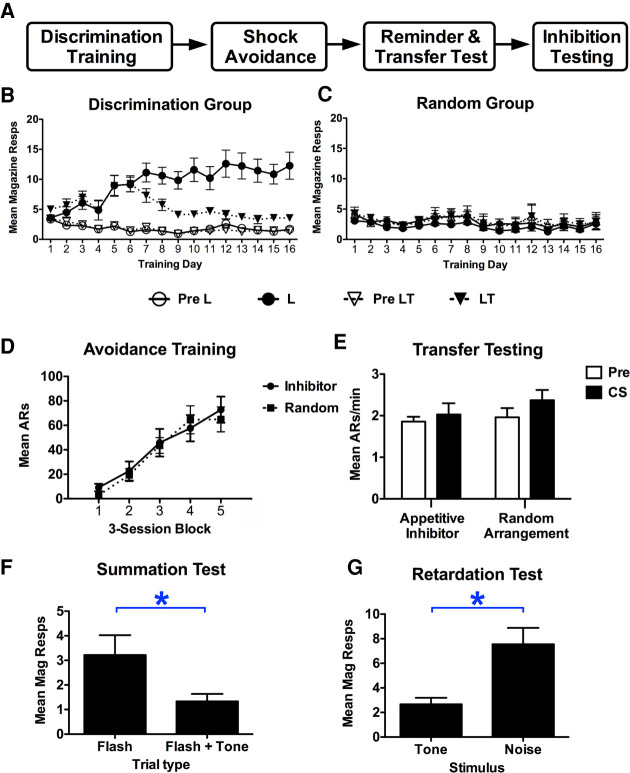Figure 3.
(A) The procedure used to evaluate whether an appetitive inhibitor can generate aversive PIT. Note that prior to discrimination training, 24 subjects received 10 d of avoidance training in order to eliminate poor performers. After four subjects were removed, the remaining good performers were randomly assigned to either the discrimination training (n = 10) or control (n = 10) condition, and then proceeded to magazine training. Following appetitive training, subjects received an additional five sessions of avoidance training, a discrimination reminder session, then transfer testing. (B,C) Magazine approach responding during discrimination phase for trained and control subjects, respectively. (D) Avoidance responses during the Sidman training phase for both the discrimination (inhibitor) and random control group. Responses per minute during pre-CS and CS periods for the transfer test phase are shown for the two groups in E. Magazine responding is shown for summation (F) and retardation (G) tests as well. Asterisks represent statistical significance at the 5% level.

